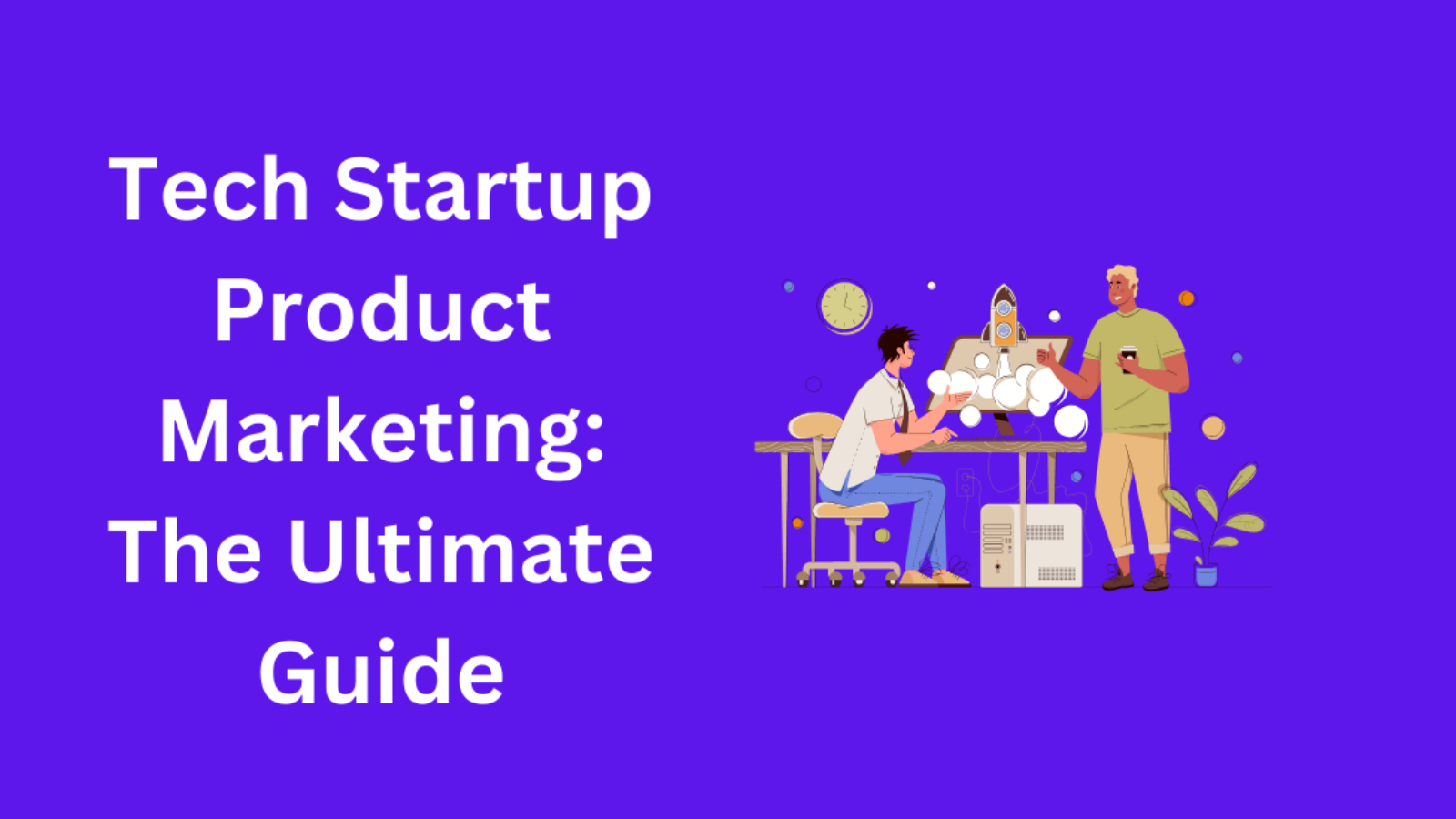In the fast-paced world of tech startups, having a groundbreaking product is only half the battle. The other half? Effective product marketing. Without a solid marketing strategy, even the most innovative products can get lost in the noise. This guide will walk you through everything you need to know about tech startup product marketing, from understanding your audience to leveraging the latest digital marketing tools.
Table of Contents
1. Understanding Product Marketing
Product marketing is the bridge between your product and your customers. It involves understanding the market, defining the product’s value proposition, and creating strategies to communicate that value to the target audience. Unlike general marketing, product marketing is deeply intertwined with the product itself, requiring a close collaboration between marketing, sales, and product development teams.
2. Why Product Marketing is Crucial for Tech Startups

For tech startups, product marketing is especially critical. Here’s why:
- Competitive Landscape: The tech industry is highly competitive. Effective Tech Startup Product Marketing helps differentiate your product from the myriad of alternatives.
- Rapid Innovation: Tech products evolve quickly. Tech Startup Product Marketing ensures that your audience understands the latest features and benefits.
- Customer Acquisition: Startups need to acquire customers quickly to sustain growth. A well-executed product marketing strategy can accelerate this process.
- Investor Interest: Strong product marketing can also attract investors by demonstrating market potential and customer interest.
3. The Product Marketing Framework

Market Research
Before you can market your product, you need to understand the market. This involves:
- Identifying Your Target Audience: Who are your ideal customers? What are their pain points?
- Competitive Analysis: Who are your competitors? What are their strengths and weaknesses?
- Market Trends: What are the current trends in your industry? How can you leverage them?
Product Positioning
Product positioning is about defining where your product fits in the market. This involves:
- Unique Selling Proposition (USP): What makes your product unique?
- Target Market: Who is your product for?
- Brand Identity: How do you want your product to be perceived?
Messaging and Value Proposition
Your messaging should clearly communicate the value of your product. This includes:
- Value Proposition: What benefits does your product offer?
- Key Messages: What are the main points you want to communicate?
- Tone and Voice: What tone and voice resonate with your target audience?
Go-to-Market Strategy
Your go-to-market (GTM) strategy outlines how you will launch your product. This includes:
- Launch Plan: What are the key milestones and timelines?
- Channels: Which marketing channels will you use?
- Budget: What is your marketing budget?
- Sales Strategy: How will you sell your product?
Customer Feedback and Iteration
After launching your product, it’s crucial to gather customer feedback and iterate. This involves:
- Surveys and Interviews: What do customers think about your product?
- Analytics: How are customers using your product?
- Iteration: How can you improve your product based on feedback?
4. Building a Product Marketing Team

A successful product marketing strategy requires a dedicated team. Key roles include:
- Product Marketing Manager (PMM): Oversees the entire Tech Startup Product Marketing strategy.
- Content Marketer: Creates content that communicates the product’s value.
- Digital Marketer: Manages online marketing channels.
- Sales Enablement Specialist: Equips the sales team with the tools they need to sell the product.
- Customer Success Manager: Ensures customers are satisfied and provides feedback to the product team.
5. Leveraging Digital Marketing Channels
Content Marketing
Content marketing involves creating valuable content to attract and engage your target audience. This can include:
- Blog Posts: Articles that provide insights and solutions to your audience’s problems.
- Whitepapers: In-depth reports that showcase your expertise.
- Case Studies: Real-world examples of how your product has helped customers.
- Videos: Engaging visual content that explains your product’s features and benefits.
Social Media Marketing
Social media is a powerful tool for reaching your audience. Key strategies include:
- Platform Selection: Choose the platforms where your audience is most active.
- Content Calendar: Plan and schedule your posts in advance.
- Engagement: Interact with your audience through comments, likes, and shares.
- Paid Advertising: Use targeted ads to reach a broader audience.
Email Marketing
Email marketing allows you to communicate directly with your audience. Best practices include:
- Segmentation: Divide your email list into segments based on demographics, behavior, or preferences.
- Personalization: Tailor your emails to the recipient’s interests and needs.
- Automation: Use automated workflows to send timely and relevant emails.
- Analytics: Track open rates, click-through rates, and conversions to measure success.
SEO and SEM
Search engine optimization (SEO) and search engine marketing (SEM) are essential for driving organic and paid traffic to your website.
- SEO: Optimize your website and content for search engines to improve organic rankings.
- SEM: Use paid search ads to appear at the top of search engine results pages (SERPs).
Influencer Marketing
Influencer marketing involves partnering with influencers to promote your product. This can include:
- Micro-Influencers: Influencers with a smaller but highly engaged audience.
- Macro-Influencers: Influencers with a large following and broad reach.
- Content Collaboration: Co-create content with influencers to leverage their audience.
6. Measuring Success: Key Metrics for Product Marketing
To determine the effectiveness of your Tech Startup Product Marketing efforts, track key metrics such as:
- Customer Acquisition Cost (CAC): The cost of acquiring a new customer.
- Customer Lifetime Value (CLTV): The total revenue you can expect from a customer over their lifetime.
- Conversion Rate: The percentage of visitors who take a desired action.
- Engagement Rate: The level of interaction with your content.
- Net Promoter Score (NPS): A measure of customer satisfaction and loyalty.
7. Common Pitfalls and How to Avoid Them
- Lack of Clear Messaging: Ensure your messaging is clear and consistent across all channels.
- Ignoring Customer Feedback: Regularly gather and act on customer feedback.
- Overlooking Competitors: Keep an eye on your competitors and adjust your strategy accordingly.
- Inconsistent Branding: Maintain a consistent brand identity across all touchpoints.
- Neglecting Analytics: Use data to inform your decisions and optimize your strategy.
8. Case Studies: Successful Tech Startup Product Marketing
Case Study 1: Slack
Slack’s success can be attributed to its strong Tech Startup Product Marketing strategy. The company focused on creating a clear value proposition, targeting the right audience, and leveraging content marketing to educate users about its product.
Case Study 2: Dropbox
Dropbox used a referral program as part of itsTech Startup Product Marketing strategy, encouraging users to refer friends in exchange for additional storage. This viral marketing tactic helped the company grow rapidly.
Case Study 3: Airbnb
Airbnb’s Tech Startup Product Marketing strategy included a strong focus on storytelling, showcasing real stories from hosts and travelers to build trust and credibility.
9. Future Trends in Tech Startup Product Marketing
- AI and Machine Learning: Leveraging AI to personalize marketing efforts and predict customer behavior.
- Voice Search Optimization: Optimizing content for voice search as voice-activated devices become more prevalent.
- Interactive Content: Using interactive content like quizzes and polls to engage users.
- Sustainability: Highlighting sustainable practices and products to appeal to environmentally conscious consumers.
- Community Building: Creating online communities to foster brand loyalty and customer engagement.
10. Conclusion
Product marketing is a vital component of any tech startup’s success. By understanding your market, positioning your product effectively, and leveraging the right marketing channels, you can ensure that your product stands out in a crowded marketplace. Remember, Tech Startup Product Marketing is an ongoing process that requires constant iteration and adaptation. Stay agile, listen to your customers, and keep an eye on emerging trends to stay ahead of the competition.
With this ultimate guide, you’re now equipped with the knowledge and strategies to take your Tech Startup Product Marketing to the next level. Happy marketing!

